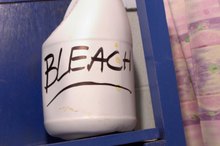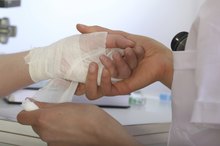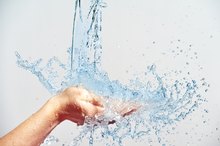What does fact checked mean?
At Healthfully, we strive to deliver objective content that is accurate and up-to-date. Our team periodically reviews articles in order to ensure content quality. The sources cited below consist of evidence from peer-reviewed journals, prominent medical organizations, academic associations, and government data.
- MayoClinic.com: Burns First Aid
- MedlinePlus: Chemical Burn or Reaction
- MayoClinic.com: Chemical Burns First Aid
The information contained on this site is for informational purposes only, and should not be used as a substitute for the advice of a professional health care provider. Please check with the appropriate physician regarding health questions and concerns. Although we strive to deliver accurate and up-to-date information, no guarantee to that effect is made.
How to Treat Alcohol Burns
Alcohol is not a corrosive chemical, so ordinary rubbing alcohol does not burn the skin 2. However, one may get burned if alcohol catches fire and touches the skin. The treatment for alcohol burns depends on the severity of the injury. Minor, or first-degree, burns damage only the outer skin layer and usually heal within a few days 1. More severe burns, including second- and third-degree burns, affect the deeper skin layers.
Rinse the affected area under cool, running water for 20 minutes to remove any remaining alcohol from the skin. If alcohol splashed into the eyes, flush them with water immediately.
What to Do if Hand Sanitizer Gets in Eyes
Learn More
Wash the burned area again if the person complains of increased burning after the first wash.
Cover the burned area with a dry, sterile dressing or clean cloth. Keep pressure or friction off of the affected area. Give over-the-counter pain reliever.
Side Effects of Inhaling Isopropyl Alcohol
Learn More
Call 911 if there are signs of major burns anywhere on the body; if the burned area is more than 3 inches in diameter; if the eyes, hands, feet, face or groins are affected; or if the person is in shock or unmanageable pain.
Warnings
Do not apply ointment to a chemical burn. Do not pop a blister open or remove dead skin from the burned area. Call the Poison Control Center if the alcohol was ingested, or if you are unsure if it is toxic.
Related Articles
References
- MayoClinic.com: Burns First Aid
- MedlinePlus: Chemical Burn or Reaction
- MayoClinic.com: Chemical Burns First Aid
- Davidson CC, Eadie PA. Burning more than calories: treadmill friction injuries in children. Irish Medical Journal. 2009;102(10):320-3. doi:10.1007/s11552-007-9046-2
- Jeremijenko L, Mott J, Wallis B, Kimble R. Paediatric treadmill friction injuries. Journal Of Paediatrics And Child Health, 2009;45(5), 310-312. doi:10.1111/j.1440-1754.2008.01329.x
- Klotz T, Kurmis R, Munn Z, Heath K, Greenwood J. Moisturisers in scar management following burn: A survey report. Burns. 2017;43(5), 965-972. doi:10.1016/j.burns.2017.01.021.
- Menon S, Ward D, Harvey J, Hei E, Holland A. Friction burns in children. Journal Of Burn Care & Research. 2012;33(6), 736-740. doi:10.1097/bcr.0b013e3182504469
- Ortiz-Prado E, Armijos L, Iturralde, A. A population-based study of the epidemiology of acute adult burns in Ecuador from 2005 to 2014. Burns. 2015;41(3), 582-589. doi:10.1016/j.burns.2014.08.012.
Writer Bio
Grace Ibay has been a freelance writer and blogger since 2005, specializing in the medical sciences and health care. She worked at Johns Hopkins University and the National Institutes of Health as a research associate and has been published in various scientific journals. Ibay holds a master's degree in health science from Johns Hopkins University in Maryland.








